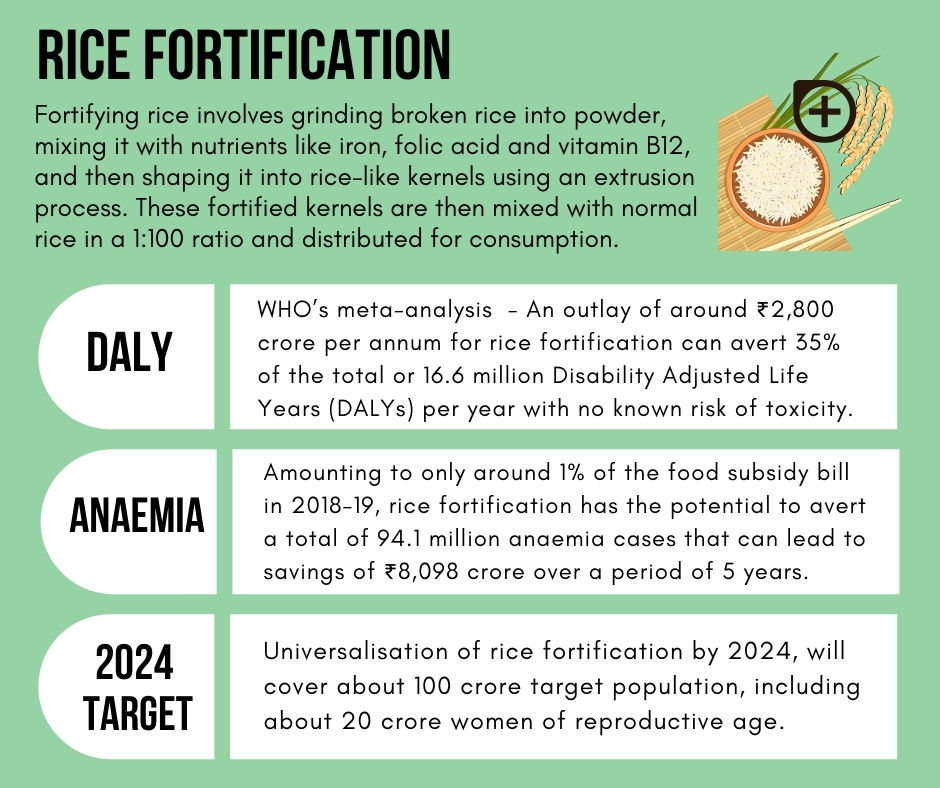What is the issue?
In an effort to combat the serious problem of anaemia due to malnutrition, Indian PM made an announcement to mandate rice fortification in all social safety net schemes by 2024.

Why should anaemia be addressed immediately?
What are the known causes?
Only 6% and 9% of children between 6-23 months consume the minimum acceptable diet and iron rich food, respectively.
There is a gap of nutritious dietary intakes when compared to Recommended Dietary Allowance (RDA).
E.g. 75% and 50% lower iron amongst rural population and adolescents; 50% lower vitamin A; and 50-75% lower folate and riboflavin.
How is rice fortification the right option?
What are the other measures?
Standardisation
Multi-pronged strategy

A new study says regular consumption of millets can improve hemoglobin and serum ferritin levels and reduce iron deficiency anemia.
References